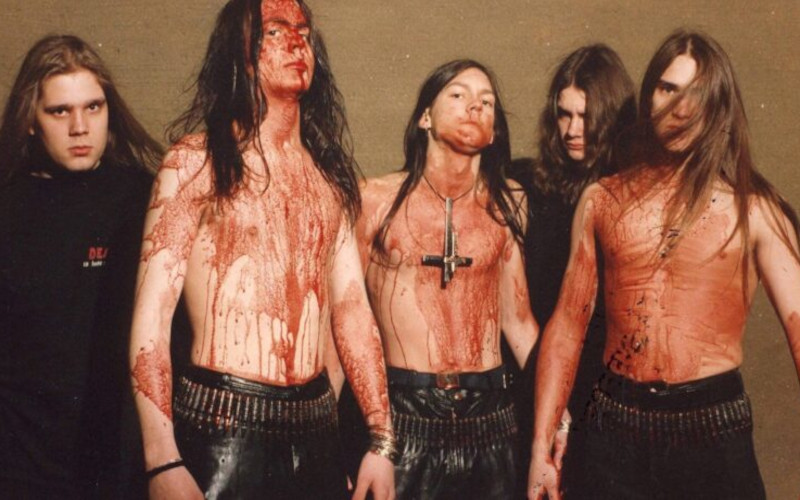Origins in Stockholm’s Underground (1988–1989)
Dismember was formed in 1988 in Stockholm, Sweden by teenagers David Blomqvist (guitar), Fred Estby (drums), and Robert Sennebäck (vocals/guitar). Influenced by extreme acts like Death, Slayer, and Autopsy, they crafted a raw and brutal sound that would soon help define the Swedish death metal movement.
Their early demos, including Dismembered (1988), were rough and primitive, but they hinted at the potential that would later explode onto the global death metal scene.
Lineup Changes and Early Development
The late 1980s Stockholm metal scene was incredibly interconnected. Robert Sennebäck briefly joined Entombed, while Fred Estby and David Blomqvist collaborated with members of Carnage. This tight-knit community played a crucial role in shaping the sound of early Swedish death metal.
Dismember embraced the now-iconic “buzzsaw guitar tone,” made famous by the Boss HM-2 pedal, which became a hallmark of their style and the genre as a whole.
The Breakthrough Demo: Last Blasphemies (1990)
In 1990, Dismember released Last Blasphemies, a significant leap in songwriting and production. This demo attracted serious attention from fans and record labels alike, solidifying their potential as leaders in the Swedish death metal scene.
Collaboration with Nicke Andersson of Entombed further helped refine their sound, leading them toward a more polished, yet still brutal, musical direction.
Signing to Nuclear Blast and Recruiting Matti Kärki
In 1991, Dismember signed with Nuclear Blast Records. Around the same time, they recruited vocalist Matti Kärki, known for his work with Carnage and Therion. Kärki’s guttural vocals and horror-themed lyrics became a defining part of Dismember’s identity.
This classic lineup—Kärki, Blomqvist, Estby, and bassist Richard Cabeza—would go on to record some of the band’s most revered material.
Like an Everflowing Stream (1991): Genre-Defining Debut
Dismember’s debut full-length album, Like an Everflowing Stream, released in May 1991, was recorded at Sunlight Studios with producer Tomas Skogsberg. The album became an instant classic of Swedish death metal, featuring tracks like “Override of the Overture” and “Soon to Be Dead.”
What made Dismember unique was their fusion of brutality and melody. Harmonized guitar riffs, relentless drumming, and Kärki’s ferocious vocals created an enduring blueprint for the genre.
Legacy of Their Early Years
Alongside bands like Entombed, Grave, and Unleashed, Dismember shaped the first wave of Swedish death metal. Their early recordings continue to influence countless metal bands around the world.
Their commitment to a raw, uncompromising sound helped them stand apart during an era when metal was becoming increasingly polished. Even decades later, their early work remains essential listening for fans of the genre.
